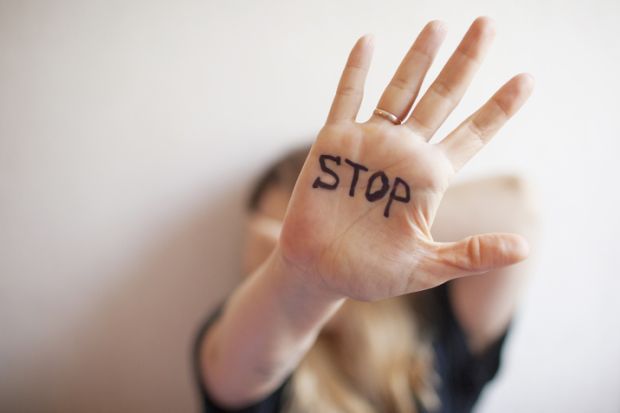Social media has been ablaze the past few weeks with discussion of 38 Harvard University professors’ now infamous open letter defending the anthropologist John Comaroff against claims of sexual harassment.
This circling of the wagons prompted a response letter from Harvard students and professors criticising the letter writers for unquestioningly accepting the version of events presented by Comaroff’s legal team. Support for the original letter was then retracted by most of the signatories after Comaroff’s alleged victims filed a lawsuit against Harvard.
Surprise was a key theme in the online discussions. Many found it shocking that scholars in fields such as ethnic studies and women’s studies, which analyse inequality and power, were well represented among the original letter’s signatories. As one scholar wrote, many of them “are known as critical post-/anti-colonial and feminist scholars. Signing this letter demonstrates how hollow their words have been.” Some Twitter users even encouraged a boycott of the signatories’ scholarship.
For those of us who have been studying sexual harassment in the academy, this train of events is nothing new. As in other professions, the history of higher education is male. Women have had to fight to be taken seriously as scholars and educators. And the fight continues to this day, particularly in relation to sexual harassment of women scholars.
One major reason is that relationship building is often critical to success in higher education. This is true both for students who want to learn and get good grades and for junior scholars who want stable university employment and tenure – and the mentorship and networking it normally takes to get there. In this context, flirtation and a variety of kinds of sexual relationships are regarded as normal and unproblematic. Students and professors go to meals together, have dates, get married. These things happen. All the parties involved are adults, with the capacity for consent. And many such relationships do not involve any glaring abuses of power. Who are we to judge them?
That said, most women students report in surveys that they have felt uncomfortable in relation to flirtatious or sexual or gendered treatment by professors. For me and many women colleagues, it was not unusual for our teachers to flirt with us, or for senior male professors to grab our bodies at academic conferences or other semi-formal work events, where the boundaries between friendship and professionalism are blurred. But there was no real point in complaining.
This is partly because sexual harassment has a stringent definition that comes from occupational law. It requires the perpetrator to make explicit threats or offer professional enticements to obtain sexual relations. A savvy professor does not need to go so far. A clever harasser grooms victims over time. They figure out who is vulnerable and who can be manipulated into accepting complicity in the professor’s behaviour, via claims that they are irresistible – or are asking for it.
University lawyers make full use of these grey areas as they pull out all the legal stops to defend the reputations of universities and professors when harassment claims are made. And even when guilt is ultimately admitted and punishments imposed, this is often on condition that the claimants sign non-disclosure agreements that ultimately protect the defendant and the institution from any reputational damage. This completes the cycle and takes the institution back to its state of innocence, so it can all happen again.
Indeed, claims of harassment typically put the victim rather than the harasser on the defensive. The victim, by definition, has less power than the defendant in the institution. So the spotlight is on them and their accusations. And the deliberations are never easy.
As in other walks of life, universities and perpetrators try to claim innocence even in cases that subsequently become notorious. An example is the case of John Searle, a star professor whose abuses of power at the University of California, Berkeley were well known but swept under the rug time and again. That Searle is a philosopher surprised some, but it should not have: surveys of ethicists and philosophers demonstrate they are no more likely to behave morally than others.
Even when allegations see the light of day, it is not uncommon for other professors to dismiss them without knowledge or evidence, based solely on their own positive relationship with the defendant. They may call the claimants – often women half their age – “harmful” or “stupid,” while assuming the defendant was merely being “friendly” – or, as in Comaroff’s case, was only a “gentle seducer”.
This is why Harvard’s #MeToo moment should serve as a wake-up call. We need to break this dynamic once and for all.
As I and colleagues have previously argued, we need new organisational approaches to and understandings of harassment in academia. These must recognise the slippery slope of harassment and replace the reactionary model with a prevention model. And, crucially, it must place the responsibility for positive change and inclusion on the organisation and its senior staff – not its least powerful, most vulnerable members.
University leaders, not students, should be the ones fighting to change a culture that often protects the guilty rather than the innocent. If they don’t finally step up and set a different institutional course, kneejerk defensiveness and dismissal will continue to add insult to the injuries of victims.
Liz Jackson is professor and acting head of the department of international education at the Education University of Hong Kong. She researches sexual harassment in academia.
Register to continue
Why register?
- Registration is free and only takes a moment
- Once registered, you can read 3 articles a month
- Sign up for our newsletter
Subscribe
Or subscribe for unlimited access to:
- Unlimited access to news, views, insights & reviews
- Digital editions
- Digital access to THE’s university and college rankings analysis
Already registered or a current subscriber? Login








